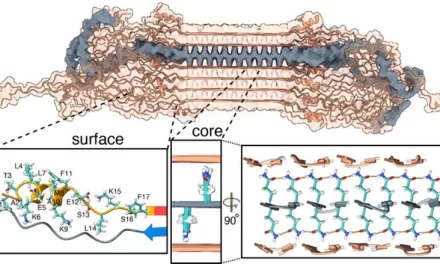Columbia Engineering researchers uncover how the brain leverages random noise for memory stability, offering insights for smarter technologies and improved cognitive health.
February 1, 2025
At first glance, random noise—like the background hum of a phone call or static during a conversation—seems like little more than interference. However, new research from Columbia Engineering has uncovered an intriguing revelation: the brain may harness such noise to enhance memory and other cognitive functions.
On January 16, researchers published their groundbreaking findings in Proceedings of the National Academy of Sciences, suggesting that random fluctuations in brain activity, typically thought of as unwanted disturbances, may actually play a pivotal role in stabilizing memories over time.
The Enigma of Brain Noise
“Despite random variability in brain activity, the brain excels at complex processes such as memory and decision-making,” explains Nuttida Rungratsameetaweemana, an assistant professor of biomedical engineering at Columbia Engineering and lead author of the study. “This raises an important question: Does noise hinder or help cognitive function?”
While previous artificial intelligence (AI) models mimicking the brain suggested that injecting randomness into neural networks could enhance learning, the study focused on more biologically accurate models of neural systems. By incorporating elements that replicate excitatory and inhibitory neurons, the research team was able to explore how random noise influences complex cognitive processes like memory.
Unveiling the Power of Noise
The results were surprising. When researchers introduced random noise into the neural networks, they found that this noise appeared essential for memory processes. Specifically, noise slowed the weakening of inhibitory neuron connections, a mechanism that helped stabilize memory-related brain activity. This allowed memories to persist longer and remain more stable.
“Rather than blocking out the noise, the brain integrates it, using randomness to fortify memory stability,” Rungratsameetaweemana says. “This project demonstrates how complexity and chaos in nature can serve a functional, meaningful purpose.”
Implications for AI and Brain Health
The study’s findings have profound implications for both neuroscience and artificial intelligence. By understanding how the brain manages uncertainty, researchers can create AI systems that are more adaptable to unpredictable, real-world environments. Robots working in dynamic settings or health technologies tracking subtle shifts in patient data could greatly benefit from this newfound knowledge.
Additionally, these insights could be crucial in understanding the role of brain variability in cognitive health, particularly in the context of disorders such as Alzheimer’s, schizophrenia, and ADHD. Rungratsameetaweemana and her team are now exploring how these principles may influence other cognitive tasks, such as decision-making and attention, as well as how they might inform treatments for cognitive impairments.
“Understanding how the brain uses randomness to stabilize memory could also enhance techniques like neurostimulation, offering new ways to support memory functions in patients with cognitive disorders,” she says.
Looking Ahead
The next steps for the research team include delving deeper into the cognitive implications of brain noise and refining neural networks to better replicate these findings in AI systems. As the field of computational neuroscience evolves, this research offers a blueprint for smarter, more resilient technologies—and a deeper understanding of how the brain keeps its memories intact.
Disclaimer: This article is based on the study Random noise promotes slow heterogeneous synaptic dynamics important for robust working memory computation published in Proceedings of the National Academy of Sciences. The conclusions presented reflect the views of the study’s authors and are subject to further research and peer review.
Source: Nuttida Rungratsameetaweemana et al, Proceedings of the National Academy of Sciences (2025), DOI: 10.1073/pnas.2316745122












